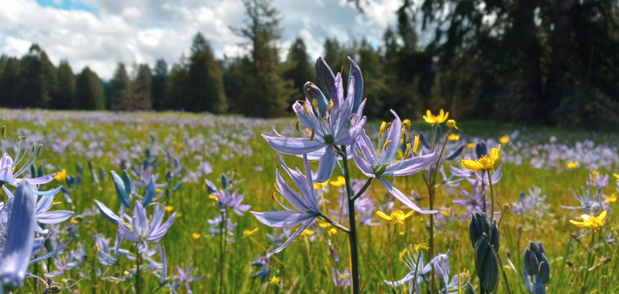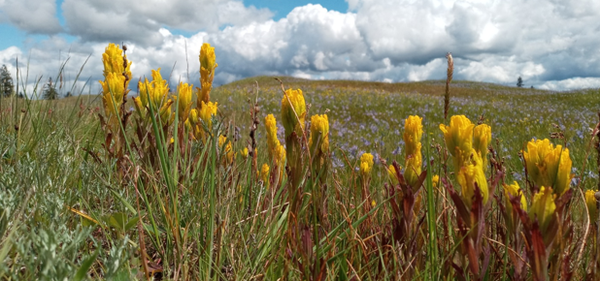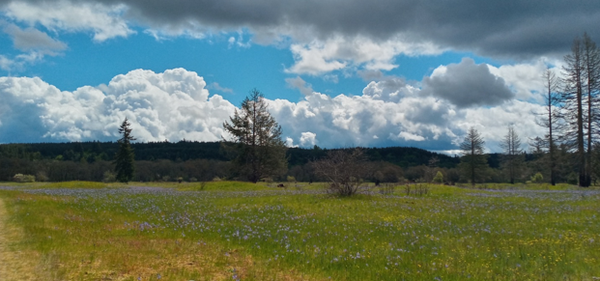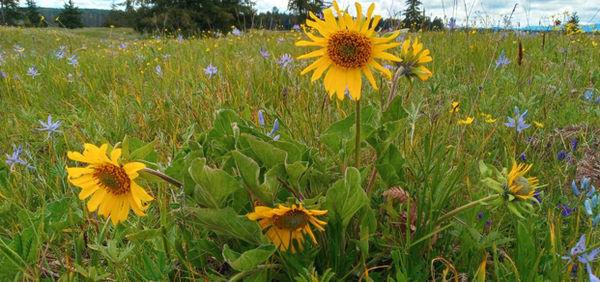
Glacial Heritage is a special native prairie ecosystem. It is one of the premier prairie conservation sites in the South Puget Sound region, and is only open to the public once a year on Prairie Appreciation Day, May 14.
Prairie Appreciation Day is an annual event that offers the public an opportunity to observe how modern restoration efforts are re-establishing native flora and fauna to the prairie and improving the health of the prairie ecosystem.
Two weeks prior to Prairie Appreciation Day, Olympia Mountaineers held a stewardship work party to aid restoration efforts. We spent several hours pulling the common invasive species, scotch broom, and enjoyed a private tour of the prairie, led by Center for Natural Land Management (CNLM) staff members. During the tour, we learned about the unique plants and animals that call the prairie home, and why restoration is integral to maintaining the health of the prairie ecosystem.
 Rare Castilleja levisecta, Golden Paintbrush. Photo by Regina Robinson.
Rare Castilleja levisecta, Golden Paintbrush. Photo by Regina Robinson.
Over 200 species depend on the prairie for resources. Many of these native species are at risk due to invasive species, like scotch broom and Douglas fir, that take over the ecosystem and compete for resources.
Prairie habitat once covered an estimated 180,000 acres of Western Washington, but due to urban development, landscape alteration, and changes in prairie management, only 3% of our original prairie ecosystems remain.
 Fir trees (Left) that have been burned And girdled.
Fir trees (Left) that have been burned And girdled.
Prairies were once carefully managed by the indigenous Coast Salish peoples, who sustained the health of the ecosystem by integrating careful management practices like prescribed burns. While prescribed burning used to be heavily suppressed by Western conservationists, it is now an important part of modern conservation and restoration efforts.
Volunteers are essential to prairie stewardship, as many of the noxious weeds and invasive species can only be removed through manual labor.
Our Prairies Need Your Help
If you missed this year’s chance to explore Glacial Heritage, do not worry! You can attend next year’s Prairie Appreciation Day. In the meantime, there are plenty of options to volunteer.
You can become one of a group of concerned citizens, landowners, conservation groups, and public agencies who are working collaboratively to restore the South Sound Prairies. Or join us during every Tuesday and every second Saturday of the month as we work with others to improve the health of our beloved prairie ecosystem.
 Puget Balsamroot, Balsamorihiza deltoidea, is a relative of the sunflower, and loves open grassy habitats and moist disturbed areas. Photo by Regina Robinson.
Puget Balsamroot, Balsamorihiza deltoidea, is a relative of the sunflower, and loves open grassy habitats and moist disturbed areas. Photo by Regina Robinson.
To see our South Sound Prairies up close, check out the Scatter Creek Wildlife Area or the Mima Mounds! Either prairie habitat will provide hours of enjoyment walking among the colorful wildflowers and butterflies.
Directions to Scatter Creek Wildlife Area
- South of Olympia, take the I-5 exit for Littlerock and drive west one block, turning south onto Case Road. Turn right on 180th Street, which will lead you to the wildlife area parking lot.
Directions to Mima Mounds
- South of Olympia, take the I-5 exit for Littlerock and drive 128th Avenue SW until it intersects with Waddell Creek Road. Turn right onto this road and the entrance to the Mima Mounds will be on the left.
 Regina Robinson
Regina Robinson